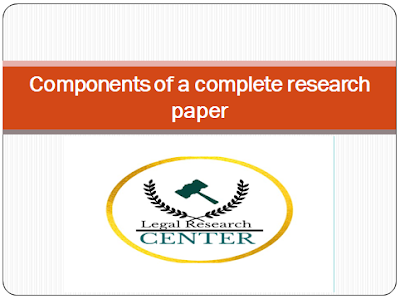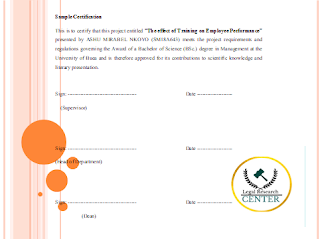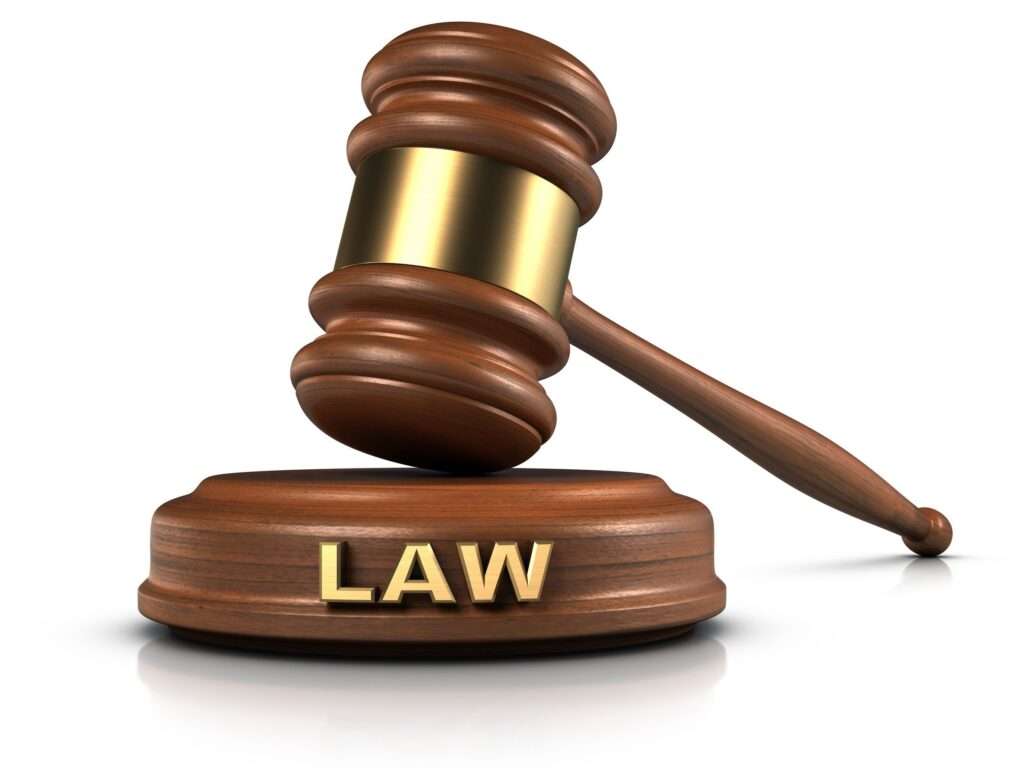· Ethical Issues
Chapter Four
Data Presentation, Analysis and Interpretation
· Demographic Presentation
· Analysis of Research for each question
· Hypothesis Testing
· Interview Analysis
Chapter Five
· Summary of Findings
Findings start from the field where your objectives are achieved.
· Conclusion
Conclusion entails a statement of what your result affirms, discussion of problems encountered and how they were solved.
· Recommendation
Your contribution when carrying out the research
· REFERENCES
The last page of an essay or research paper written in APA style is the references page. It contains a list of all the sources you’ve used in your project, making it easy for readers to locate what you’ve cited.
The APA style is a standardized system of structuring texts and citing sources developed by the American Psychological Association (APA).
The APA style has its own format for the references page. On the last page of a document, different formatting styles have distinct names and techniques of citing sources.
The Modern Language Association (MLA) refers to it as a ‘Works Cited,’ while the Turabian style refers to it as a ‘Bibliography.’
In-text Citations
To provide credit to a source’s content, in-text citations are employed throughout a research article.
These are brief citations that rapidly explain the source of the information.
The entire citation on the references page will match these in-text sources.
Remember that every source mentioned in an in-text citation must also be listed in the references section.
It is unnecessary to credit a source on your references page if you looked at it during your early research but didn’t use any of the content in your paper or article.
Finally, double-check that all of your in-text citations and references are formatted appropriately, and keep in mind that the prevalent citation styles differ slightly.
Students moan about having to use these forms but imagine being forced to create your own format and documentation style in addition to writing the paper.
When you employ a third-party source to back up or expand on your ideas, you must credit them with
an in-text citation. Each source you utilize in your paper must also be listed in your bibliography. A
source is a book, magazine, website, peer-reviewed journal article, or other pieces of media that you
used to back up your argument. They’re also known as references or citations.
· APPENDIX
An appendix contains information that is not required to be included in the body of the paper but may
be useful in providing more full knowledge of the research subject. It also contains information that is
too lengthy to be included in the body of the document.
Topic selection
Essay Writing
Thesis Writing
Data Analysis
Data interpretation
Data analysis training (SPSS)
PowerPoint Building
Components of a complete research paper,Components of a complete research paper,, Components of a complete research paper
Components of a complete research paper,Components of a complete research paper,, Components of a complete research paper
Components of a complete research paper,Components of a complete research paper,, Components of a complete research paper
Components of a complete research paper,Components of a complete research paper,, Components of a complete research paper
Components of a complete research paper,Components of a complete research paper,, Components of a complete research paper
Components of a complete research paper,Components of a complete research paper,, Components of a complete research paper
Chapter Two
Literature Review and Theoretical Framework
1. Literature Review
· Conceptual Review
· Empirical Review or Review of other works
· Contribution to knowledge (knowledge gab)
2. Theoretical Framework
Chapter Three
Research Methodology
· Research Design
· Study Area
· Study Population
· Sample Size
· Sample Technique
· Research Instruments (questionnaires, interview, focus groups and observation)
· Data Analysis (Descriptive Statistics, thematic analysis, content analysis)
· Validity
· Ethical Issues
Chapter Four
Data Presentation, Analysis and Interpretation
· Demographic Presentation
· Analysis of Research for each question
· Hypothesis Testing
· Interview Analysis
Chapter Five
· Summary of Findings
Findings start from the field where your objectives are achieved.
· Conclusion
Conclusion entails a statement of what your result affirms, discussion of problems encountered and how they were solved.
· Recommendation
Your contribution when carrying out the research
· REFERENCES
The last page of an essay or research paper written in APA style is the references page. It contains a list of all the sources you’ve used in your project, making it easy for readers to locate what you’ve cited.
The APA style is a standardized system of structuring texts and citing sources developed by the American Psychological Association (APA).
The APA style has its own format for the references page. On the last page of a document, different formatting styles have distinct names and techniques of citing sources.
The Modern Language Association (MLA) refers to it as a ‘Works Cited,’ while the Turabian style refers to it as a ‘Bibliography.’
In-text Citations
To provide credit to a source’s content, in-text citations are employed throughout a research article.
These are brief citations that rapidly explain the source of the information.
The entire citation on the references page will match these in-text sources.
Remember that every source mentioned in an in-text citation must also be listed in the references section.
It is unnecessary to credit a source on your references page if you looked at it during your early research but didn’t use any of the content in your paper or article.
Finally, double-check that all of your in-text citations and references are formatted appropriately, and keep in mind that the prevalent citation styles differ slightly.
Students moan about having to use these forms but imagine being forced to create your own format and documentation style in addition to writing the paper.
When you employ a third-party source to back up or expand on your ideas, you must credit them with
an in-text citation. Each source you utilize in your paper must also be listed in your bibliography. A
source is a book, magazine, website, peer-reviewed journal article, or other pieces of media that you
used to back up your argument. They’re also known as references or citations.
· APPENDIX
An appendix contains information that is not required to be included in the body of the paper but may
be useful in providing more full knowledge of the research subject. It also contains information that is
too lengthy to be included in the body of the document.
Topic selection
Essay Writing
Thesis Writing
Data Analysis
Data interpretation
Data analysis training (SPSS)
PowerPoint Building
Components of a complete research paper,Components of a complete research paper,, Components of a complete research paper
Components of a complete research paper,Components of a complete research paper,, Components of a complete research paper
Components of a complete research paper,Components of a complete research paper,, Components of a complete research paper
Components of a complete research paper,Components of a complete research paper,, Components of a complete research paper
Components of a complete research paper,Components of a complete research paper,, Components of a complete research paper
Components of a complete research paper,Components of a complete research paper,, Components of a complete research paper
ANOVA: Analysis of Variance
9. TABLE OF CONTENT
Sample
Declaration……………………………………………………………………………….
Certification……………………………………………………………………………
Dedication……………………………………………………………………………..
Acknowledgement………………………………………………………………….
Abstract…………………………………………………………………………………….
List of Tables……………………………………………………………………………
List of Figures…………………………………………………………………
List of Abbreviations………………………………………………………..
Chapter one………………………………………………………………………….
General Introduction……………………………………………………………..
Background of the Study…………………………………………………………
Statement of the Problem………………………………………………………….
Research Questions……………………………………………………………………..
Research Objectives ……………………………………………………………………….
Hypothesis……………………………………………………………………………………..
Scope of the Study…………………………………………………………………….
Significance of the Study………………………………………………………….
Definition of terms or Operational definition……………………………
Organization of the Chapters…………………………………………………………..
Chapter two………………………………………………………………………………………
Literature Review………………………………………………………………………………
Conceptual Review……………………………………………………………………………..
Empirical Review or Review of other works………………………………………….
Contribution to knowledge (knowledge gab)………………………………………….
Theoretical Framework…………………………………………………………………………
Chapter three……………………………………………………………………………………
Research Methodology……………………………………………………………………………..
Research Design………………………………………………………………………………..
Study Area…………………………………………………………………………………………
Study Population……………………………………………………………………………………
Sample Size………………………………………………………………………………………
Sample Technique………………………………………………………………………………….
Research Instruments …………………………………………………………………………….
Data Analysis ………………………………………………………………………………….
Validity……………………………………………………………………………………………..
Ethical Issues……………………………………………………………………………………….
Chapter four………………………………………………………………………………..
Demographic Presentation…………………………………………………………………………
Analysis of Research for each question……………………………………………………….
Hypothesis Testing………………………………………………………………
Interview Analysis…………………………………………………………………
Chapter five……………………………………………………………………………………
Summary of Findings……………………………………………………………………
Conclusion…………………………………………………………………………….
Recommendation………………………………………………………………………
References………………………………………………………………………………
Appendix………………………………………………………………………………
Chapter One
· General Introduction
· Background of the Study
It demonstrates the need to do the study, the challenges, personal views of the research and it helps to convince the reader that there is a problem.
It engages the interest of the reader.
· Statement of the Problem
A research problem refers to an issue or concern that puzzles the researcher. This may be due to its effects or consistence despite measures taken.
For instance, a researcher may be puzzled as to why beer consumption is still high despite the increase in price.
· Research Questions
· Research Objectives
· Hypothesis
· Scope of the Study
· Significance of the Study
· Definition of terms or Operational definition
· Organization of the Chapters
Chapter Two
Literature Review and Theoretical Framework
1. Literature Review
· Conceptual Review
· Empirical Review or Review of other works
· Contribution to knowledge (knowledge gab)
2. Theoretical Framework
Chapter Three
Research Methodology
· Research Design
· Study Area
· Study Population
· Sample Size
· Sample Technique
· Research Instruments (questionnaires, interview, focus groups and observation)
· Data Analysis (Descriptive Statistics, thematic analysis, content analysis)
· Validity
· Ethical Issues
Chapter Four
Data Presentation, Analysis and Interpretation
· Demographic Presentation
· Analysis of Research for each question
· Hypothesis Testing
· Interview Analysis
Chapter Five
· Summary of Findings
Findings start from the field where your objectives are achieved.
· Conclusion
Conclusion entails a statement of what your result affirms, discussion of problems encountered and how they were solved.
· Recommendation
Your contribution when carrying out the research
· REFERENCES
The last page of an essay or research paper written in APA style is the references page. It contains a list of all the sources you’ve used in your project, making it easy for readers to locate what you’ve cited.
The APA style is a standardized system of structuring texts and citing sources developed by the American Psychological Association (APA).
The APA style has its own format for the references page. On the last page of a document, different formatting styles have distinct names and techniques of citing sources.
The Modern Language Association (MLA) refers to it as a ‘Works Cited,’ while the Turabian style refers to it as a ‘Bibliography.’
In-text Citations
To provide credit to a source’s content, in-text citations are employed throughout a research article.
These are brief citations that rapidly explain the source of the information.
The entire citation on the references page will match these in-text sources.
Remember that every source mentioned in an in-text citation must also be listed in the references section.
It is unnecessary to credit a source on your references page if you looked at it during your early research but didn’t use any of the content in your paper or article.
Finally, double-check that all of your in-text citations and references are formatted appropriately, and keep in mind that the prevalent citation styles differ slightly.
Students moan about having to use these forms but imagine being forced to create your own format and documentation style in addition to writing the paper.
When you employ a third-party source to back up or expand on your ideas, you must credit them with
an in-text citation. Each source you utilize in your paper must also be listed in your bibliography. A
source is a book, magazine, website, peer-reviewed journal article, or other pieces of media that you
used to back up your argument. They’re also known as references or citations.
· APPENDIX
An appendix contains information that is not required to be included in the body of the paper but may
be useful in providing more full knowledge of the research subject. It also contains information that is
too lengthy to be included in the body of the document.
Topic selection
Essay Writing
Thesis Writing
Data Analysis
Data interpretation
Data analysis training (SPSS)
PowerPoint Building
Components of a complete research paper,Components of a complete research paper,, Components of a complete research paper
Components of a complete research paper,Components of a complete research paper,, Components of a complete research paper
Components of a complete research paper,Components of a complete research paper,, Components of a complete research paper
Components of a complete research paper,Components of a complete research paper,, Components of a complete research paper
Components of a complete research paper,Components of a complete research paper,, Components of a complete research paper
Components of a complete research paper,Components of a complete research paper,, Components of a complete research paper
If you want to save time when creating your List of Tables, make sure to employ font styles.
Sample list of tables
Table 1: The training and development needs’ types…………………………………11
Table 2: A clear comparison chart…………………………………………………….15
Table 3: Differences in Emphasis in Qualitative versus Quantitative Methods………..30
Table 4.1: Age of the respondent……………………………………………………………………….. 37
Table 4.2: Gender…………………………………………………………………………………………….. 37
Table 4.3: Marital Status……………………………………………………………………………………. 38
Table 4.4: Educational Qualification…………………………………………………………………… 38
Table 4.5: Level of Experience…………………………………………………………………………… 39
Table 4.6: ANOVA………………………………………………………………………………………….. 40
Table 4.7: Model summary………………………………………………………………………………… 41
Table 4.8: Correlation……………………………………………………………………………………….. 42
7. LIST OF FIGURES (ON ONE PAGE)
The list of figures is used by readers to locate visual information.
The list of figures in administrative or research documents indicates the titles and places of visuals (figures, drawings, pictures, and maps).
Figure one:
Figure two:
Figure three:
8. LIST OF ABBREVIATIONS (ON ONE PAGE)
If your thesis or dissertation involves a lot of symbols or abbreviations, including a list of abbreviations to help your reader is a good idea.
This is an alphabetical list of the terms and their definitions.
Sample list of abbreviations
CEFAM: Centre de Formation pour L’Administration Municipal
NASLA: National School of Local Administration
OLS: Ordinary Least Squares
SPSS: Statistical Package for Social Scientist
ANOVA: Analysis of Variance
9. TABLE OF CONTENT
Sample
Declaration……………………………………………………………………………….
Certification……………………………………………………………………………
Dedication……………………………………………………………………………..
Acknowledgement………………………………………………………………….
Abstract…………………………………………………………………………………….
List of Tables……………………………………………………………………………
List of Figures…………………………………………………………………
List of Abbreviations………………………………………………………..
Chapter one………………………………………………………………………….
General Introduction……………………………………………………………..
Background of the Study…………………………………………………………
Statement of the Problem………………………………………………………….
Research Questions……………………………………………………………………..
Research Objectives ……………………………………………………………………….
Hypothesis……………………………………………………………………………………..
Scope of the Study…………………………………………………………………….
Significance of the Study………………………………………………………….
Definition of terms or Operational definition……………………………
Organization of the Chapters…………………………………………………………..
Chapter two………………………………………………………………………………………
Literature Review………………………………………………………………………………
Conceptual Review……………………………………………………………………………..
Empirical Review or Review of other works………………………………………….
Contribution to knowledge (knowledge gab)………………………………………….
Theoretical Framework…………………………………………………………………………
Chapter three……………………………………………………………………………………
Research Methodology……………………………………………………………………………..
Research Design………………………………………………………………………………..
Study Area…………………………………………………………………………………………
Study Population……………………………………………………………………………………
Sample Size………………………………………………………………………………………
Sample Technique………………………………………………………………………………….
Research Instruments …………………………………………………………………………….
Data Analysis ………………………………………………………………………………….
Validity……………………………………………………………………………………………..
Ethical Issues……………………………………………………………………………………….
Chapter four………………………………………………………………………………..
Demographic Presentation…………………………………………………………………………
Analysis of Research for each question……………………………………………………….
Hypothesis Testing………………………………………………………………
Interview Analysis…………………………………………………………………
Chapter five……………………………………………………………………………………
Summary of Findings……………………………………………………………………
Conclusion…………………………………………………………………………….
Recommendation………………………………………………………………………
References………………………………………………………………………………
Appendix………………………………………………………………………………
Chapter One
· General Introduction
· Background of the Study
It demonstrates the need to do the study, the challenges, personal views of the research and it helps to convince the reader that there is a problem.
It engages the interest of the reader.
· Statement of the Problem
A research problem refers to an issue or concern that puzzles the researcher. This may be due to its effects or consistence despite measures taken.
For instance, a researcher may be puzzled as to why beer consumption is still high despite the increase in price.
· Research Questions
· Research Objectives
· Hypothesis
· Scope of the Study
· Significance of the Study
· Definition of terms or Operational definition
· Organization of the Chapters
Chapter Two
Literature Review and Theoretical Framework
1. Literature Review
· Conceptual Review
· Empirical Review or Review of other works
· Contribution to knowledge (knowledge gab)
2. Theoretical Framework
Chapter Three
Research Methodology
· Research Design
· Study Area
· Study Population
· Sample Size
· Sample Technique
· Research Instruments (questionnaires, interview, focus groups and observation)
· Data Analysis (Descriptive Statistics, thematic analysis, content analysis)
· Validity
· Ethical Issues
Chapter Four
Data Presentation, Analysis and Interpretation
· Demographic Presentation
· Analysis of Research for each question
· Hypothesis Testing
· Interview Analysis
Chapter Five
· Summary of Findings
Findings start from the field where your objectives are achieved.
· Conclusion
Conclusion entails a statement of what your result affirms, discussion of problems encountered and how they were solved.
· Recommendation
Your contribution when carrying out the research
· REFERENCES
The last page of an essay or research paper written in APA style is the references page. It contains a list of all the sources you’ve used in your project, making it easy for readers to locate what you’ve cited.
The APA style is a standardized system of structuring texts and citing sources developed by the American Psychological Association (APA).
The APA style has its own format for the references page. On the last page of a document, different formatting styles have distinct names and techniques of citing sources.
The Modern Language Association (MLA) refers to it as a ‘Works Cited,’ while the Turabian style refers to it as a ‘Bibliography.’
In-text Citations
To provide credit to a source’s content, in-text citations are employed throughout a research article.
These are brief citations that rapidly explain the source of the information.
The entire citation on the references page will match these in-text sources.
Remember that every source mentioned in an in-text citation must also be listed in the references section.
It is unnecessary to credit a source on your references page if you looked at it during your early research but didn’t use any of the content in your paper or article.
Finally, double-check that all of your in-text citations and references are formatted appropriately, and keep in mind that the prevalent citation styles differ slightly.
Students moan about having to use these forms but imagine being forced to create your own format and documentation style in addition to writing the paper.
When you employ a third-party source to back up or expand on your ideas, you must credit them with
an in-text citation. Each source you utilize in your paper must also be listed in your bibliography. A
source is a book, magazine, website, peer-reviewed journal article, or other pieces of media that you
used to back up your argument. They’re also known as references or citations.
· APPENDIX
An appendix contains information that is not required to be included in the body of the paper but may
be useful in providing more full knowledge of the research subject. It also contains information that is
too lengthy to be included in the body of the document.
Topic selection
Essay Writing
Thesis Writing
Data Analysis
Data interpretation
Data analysis training (SPSS)
PowerPoint Building
Components of a complete research paper,Components of a complete research paper,, Components of a complete research paper
Components of a complete research paper,Components of a complete research paper,, Components of a complete research paper
Components of a complete research paper,Components of a complete research paper,, Components of a complete research paper
Components of a complete research paper,Components of a complete research paper,, Components of a complete research paper
Components of a complete research paper,Components of a complete research paper,, Components of a complete research paper
Components of a complete research paper,Components of a complete research paper,, Components of a complete research paper

Components of a complete research paper
Preliminary pages
Preliminary pages are those sections of a project or research paper that appear before the first chapter.
The first page of a research paper is the cover page, which comprises information on the entire scope of the project’s work.
The second page is the Declaration page, followed by the Certification, Dedication, Acknowledgment, Abstract, List of Tables, List of Figures, List of Abbreviations and Table of Content.
v COVER PAGE
A cover page, also known as a title page, is usually the opening page of a book and contains general and basic information such as the title, author’s name, publisher’s name, date of publication, edition, and so on.
A cover page for a group project report, for example, maybe required by a teacher.
The first page of your article is the cover page, which contains some formal information about your research.
It is critical to devote time and effort to create a decent research paper cover page.
Sample Cover Page
UNIVERSITY OF BUEA
FACULTY OF LAWS AND POLITICAL SCIENCE
DEPARTMENT OF ENGLISH LAW
COURSE TITLE: RESEARCH PROJECT
COURSE CODE: LAW498
TOPIC
A CRITICAL APPRAISAL OF THE RIGHTS OF INTERNALLY DISPLACED PERSONS
IN CAMEROON
A Research Project Submitted to The Department of English Law, Faculty of Laws And Political Science, of the University of Buea in Partial
Fulfilment of the Requirement for The Award of
A Bachelor of Law (LL.B) Degree
in English Law.
PRESENTED BY
ASHU MIRABEL NKOYO
LP18B335
SUPERVISOR:
PROF. MASUM ELVIS
JUNE, 2021

1. Declaration (on one page)
The writer expresses appreciation or honours others in the dedication part, usually those who have inspired or aided them while writing their book, research paper, or reports.
You are allowed to write a dedication in whatever way you like. It is one of the most personal elements of your writing.
Sample Declaration
I, ASHU MIRABEL NKOYO with Registration number SM18A643 hereby declare that this project entitled:
“The effect of Training on Employee Performance” is a research for my efforts that have not been presented before by any researcher or for any other academic purposes and it is the result of my personal research efforts.
All borrowed ideas have been acknowledged in the reference and or quotations.
Sign: ————————————- Date ————————
ASHU MIRABEL NKOYO (Supervisee)
The above declaration is confirmed by
Sign: ———————————— Date ————————–
Dr SMART NELA BUH
(Supervisor)

2. CERTIFICATION (ON ONE PAGE)
Sample Certification
This is to certify that this project entitled “The Effect of Training on Employee Performance” presented by ASHU MIRABEL NKOYO (SM18A643) meets the project requirements and regulations governing the award of a Bachelor of Science (BSc.) degree in Management at the University of Buea and is therefore approved for its contributions to scientific knowledge and literary presentation.
Sign: ————————————— Date ——————–
(Supervisor)
Sign: ————————————— Date ——————–
(Head of Department)
Sign: ————————————— Date ——————–
(Dean)

3. DEDICATION (ON ONE PAGE)
The dedication is the writer’s personal acknowledgement of notable people in his or her life, expressing gratitude and respect for them.
Because the dedication is personal, any individuals mentioned are typically unconnected to the dissertation’s topic. It does not have to be intellectual in any sense.
Sample Dedication
I dedicate this project to God Almighty
4. ACKNOWLEDGEMENT (ON ONE PAGE)
An acknowledgement in a research paper refers to the area at the beginning of your thesis formatting where you express your gratitude for the persons who helped you with your study.
It’s up to you to figure out who you owe the most gratitude to for assisting you with your research.
Sample Acknowledgement
I would like to in a very special, thank my supervisor Dr SMART NELA BUH who took pains upon his tight schedule to guide, correct and proofread this piece of work.
My sincere gratitude likewise, goes to the lecturers of the Management program.
The realization of this piece is thanks to your relentless strive towards imparting knowledge.
You will never regret your efforts.
I want to say a big thank you to my parents Mr Amo Ben and Mrs Bentine for their financial and moral support.
I am equally thankful to all relatives, friends and others who in one way or another shared their support, morally, financially and physically. Thank you for all your prayers and for always being there to help.

5. ABSTRACT (ON ONE PAGE)
An abstract summarizes the major aspects of the entire paper in a prescribed sequence, usually in one paragraph of 300 words or less, and includes:
the overall purpose of the study and the research problem(s) you investigated; the basic design of the study; and major findings or trends discovered as a result of your research.
An abstract is a brief description of your research findings.
It’s meant to give a broad overview of your work without getting into too much detail.
Abstracts should be self-contained and succinct, describing your work in as few words as feasible.
As the examples below show, different fields require slightly different approaches to abstracts;
therefore it’s a good idea to examine some abstracts from your own field before you start writing one.
The most crucial role of an abstract is to assist a reader in deciding whether or not to read your complete article.
Consider the following scenario: you’re an undergraduate student in the library late on a Friday night. You’re tired, bored, and sick of reading about celery’s history on the internet.
The last thing you want to do is read an entire article only to find out it has nothing to do with your point of view.
An excellent abstract can overcome this difficulty by suggesting to the reader whether or not the work will be relevant to his or her specific research subject.
Abstracts are also used by libraries to help them catalogue publications based on the keywords that appear in them.
Sample Abstract
Employees are major assets of any organization. The active role they play in a company’s success cannot be underestimated.
As a result, equipping these unique assets through effective training becomes imperative to maximize job performance.
Also, position them to take on the challenges of today’s competitive business climate.
Although extensive research has been conducted in the area of Human Research Management, the same cannot be said on employee training especially as it concerns developing countries.
The purpose of this thesis was to evaluate the effects of training on employee performance, using the Buea Council in Cameroon as a case study.
To understand the study aim, four goals were developed and these focused particularly on identifying the training programs’ existing in the Organization, the objective of the training offered, and the methods employed and finally the effects of training and development on employee performance.
The study was based on three case studies of the Buea Council.
A qualitative research approach of the data collection was adopted using a questionnaire comprising of 21 questions.
Based on this sample the results obtained indicate that training has a clear effect on the performance of employees.
The findings can prove useful to human resource managers, Human resource policy decision-makers, as well as government and academic institutions.
Keywords: Training, Performance, Buea Council, Cameroon
6. LIST OF TABLES (ON ONE PAGE)
A list of tables is a reference tool that allows your readers to browse data in your thesis or dissertation quickly and effortlessly.
The process of making the list is similar to that of making a Table of Contents.
If you want to save time when creating your List of Tables, make sure to employ font styles.
Sample list of tables
Table 1: The training and development needs’ types…………………………………11
Table 2: A clear comparison chart…………………………………………………….15
Table 3: Differences in Emphasis in Qualitative versus Quantitative Methods………..30
Table 4.1: Age of the respondent……………………………………………………………………….. 37
Table 4.2: Gender…………………………………………………………………………………………….. 37
Table 4.3: Marital Status……………………………………………………………………………………. 38
Table 4.4: Educational Qualification…………………………………………………………………… 38
Table 4.5: Level of Experience…………………………………………………………………………… 39
Table 4.6: ANOVA………………………………………………………………………………………….. 40
Table 4.7: Model summary………………………………………………………………………………… 41
Table 4.8: Correlation……………………………………………………………………………………….. 42
7. LIST OF FIGURES (ON ONE PAGE)
The list of figures is used by readers to locate visual information.
The list of figures in administrative or research documents indicates the titles and places of visuals (figures, drawings, pictures, and maps).
Figure one:
Figure two:
Figure three:
8. LIST OF ABBREVIATIONS (ON ONE PAGE)
If your thesis or dissertation involves a lot of symbols or abbreviations, including a list of abbreviations to help your reader is a good idea.
This is an alphabetical list of the terms and their definitions.
Sample list of abbreviations
CEFAM: Centre de Formation pour L’Administration Municipal
NASLA: National School of Local Administration
OLS: Ordinary Least Squares
SPSS: Statistical Package for Social Scientist
ANOVA: Analysis of Variance
9. TABLE OF CONTENT
Sample
Declaration……………………………………………………………………………….
Certification……………………………………………………………………………
Dedication……………………………………………………………………………..
Acknowledgement………………………………………………………………….
Abstract…………………………………………………………………………………….
List of Tables……………………………………………………………………………
List of Figures…………………………………………………………………
List of Abbreviations………………………………………………………..
Chapter one………………………………………………………………………….
General Introduction……………………………………………………………..
Background of the Study…………………………………………………………
Statement of the Problem………………………………………………………….
Research Questions……………………………………………………………………..
Research Objectives ……………………………………………………………………….
Hypothesis……………………………………………………………………………………..
Scope of the Study…………………………………………………………………….
Significance of the Study………………………………………………………….
Definition of terms or Operational definition……………………………
Organization of the Chapters…………………………………………………………..
Chapter two………………………………………………………………………………………
Literature Review………………………………………………………………………………
Conceptual Review……………………………………………………………………………..
Empirical Review or Review of other works………………………………………….
Contribution to knowledge (knowledge gab)………………………………………….
Theoretical Framework…………………………………………………………………………
Chapter three……………………………………………………………………………………
Research Methodology……………………………………………………………………………..
Research Design………………………………………………………………………………..
Study Area…………………………………………………………………………………………
Study Population……………………………………………………………………………………
Sample Size………………………………………………………………………………………
Sample Technique………………………………………………………………………………….
Research Instruments …………………………………………………………………………….
Data Analysis ………………………………………………………………………………….
Validity……………………………………………………………………………………………..
Ethical Issues……………………………………………………………………………………….
Chapter four………………………………………………………………………………..
Demographic Presentation…………………………………………………………………………
Analysis of Research for each question……………………………………………………….
Hypothesis Testing………………………………………………………………
Interview Analysis…………………………………………………………………
Chapter five……………………………………………………………………………………
Summary of Findings……………………………………………………………………
Conclusion…………………………………………………………………………….
Recommendation………………………………………………………………………
References………………………………………………………………………………
Appendix………………………………………………………………………………
Chapter One
· General Introduction
· Background of the Study
It demonstrates the need to do the study, the challenges, personal views of the research and it helps to convince the reader that there is a problem.
It engages the interest of the reader.
· Statement of the Problem
A research problem refers to an issue or concern that puzzles the researcher. This may be due to its effects or consistence despite measures taken.
For instance, a researcher may be puzzled as to why beer consumption is still high despite the increase in price.
· Research Questions
· Research Objectives
· Hypothesis
· Scope of the Study
· Significance of the Study
· Definition of terms or Operational definition
· Organization of the Chapters
Chapter Two
Literature Review and Theoretical Framework
1. Literature Review
· Conceptual Review
· Empirical Review or Review of other works
· Contribution to knowledge (knowledge gab)
2. Theoretical Framework
Chapter Three
Research Methodology
· Research Design
· Study Area
· Study Population
· Sample Size
· Sample Technique
· Research Instruments (questionnaires, interview, focus groups and observation)
· Data Analysis (Descriptive Statistics, thematic analysis, content analysis)
· Validity
· Ethical Issues
Chapter Four
Data Presentation, Analysis and Interpretation
· Demographic Presentation
· Analysis of Research for each question
· Hypothesis Testing
· Interview Analysis
Chapter Five
· Summary of Findings
Findings start from the field where your objectives are achieved.
· Conclusion
Conclusion entails a statement of what your result affirms, discussion of problems encountered and how they were solved.
· Recommendation
Your contribution when carrying out the research
· REFERENCES
The last page of an essay or research paper written in APA style is the references page. It contains a list of all the sources you’ve used in your project, making it easy for readers to locate what you’ve cited.
The APA style is a standardized system of structuring texts and citing sources developed by the American Psychological Association (APA).
The APA style has its own format for the references page. On the last page of a document, different formatting styles have distinct names and techniques of citing sources.
The Modern Language Association (MLA) refers to it as a ‘Works Cited,’ while the Turabian style refers to it as a ‘Bibliography.’
In-text Citations
To provide credit to a source’s content, in-text citations are employed throughout a research article.
These are brief citations that rapidly explain the source of the information.
The entire citation on the references page will match these in-text sources.
Remember that every source mentioned in an in-text citation must also be listed in the references section.
It is unnecessary to credit a source on your references page if you looked at it during your early research but didn’t use any of the content in your paper or article.
Finally, double-check that all of your in-text citations and references are formatted appropriately, and keep in mind that the prevalent citation styles differ slightly.
Students moan about having to use these forms but imagine being forced to create your own format and documentation style in addition to writing the paper.
When you employ a third-party source to back up or expand on your ideas, you must credit them with
an in-text citation. Each source you utilize in your paper must also be listed in your bibliography. A
source is a book, magazine, website, peer-reviewed journal article, or other pieces of media that you
used to back up your argument. They’re also known as references or citations.
· APPENDIX
An appendix contains information that is not required to be included in the body of the paper but may
be useful in providing more full knowledge of the research subject. It also contains information that is
too lengthy to be included in the body of the document.
Topic selection
Essay Writing
Thesis Writing
Data Analysis
Data interpretation
Data analysis training (SPSS)
PowerPoint Building
Components of a complete research paper,Components of a complete research paper,, Components of a complete research paper
Components of a complete research paper,Components of a complete research paper,, Components of a complete research paper
Components of a complete research paper,Components of a complete research paper,, Components of a complete research paper
Components of a complete research paper,Components of a complete research paper,, Components of a complete research paper
Components of a complete research paper,Components of a complete research paper,, Components of a complete research paper
Components of a complete research paper,Components of a complete research paper,, Components of a complete research paper




